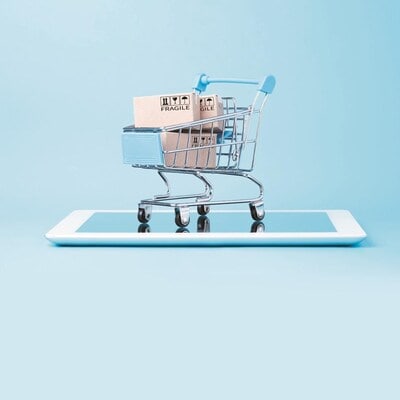Online shopping in India, currently valued at $70 billion, accounts for approximately 7% of the country's total retail market and offers huge growth opportunities. In the coming years, several factors such as high internet penetration, low-cost internet services, and significant growth in rural smartphone users are expected to propel the sector towards a promising future.
Click here to follow our WhatsApp channel
India boasts the world's second-largest internet user base with a staggering 881 million users and is poised to emerge as the third-largest online retail market by 2030 due to the rapid expansion of its digital economy The report states.
Affordable internet that facilitates online shopping
The report states that India will be the leader in the online shopping revolution, with an estimated 500 million shoppers by 2030. Investment India highlights India's increasing internet penetration rate, with 87 per cent of Indian households expected to have access to the internet by 2025, with particular emphasis on low pricing. Mobile will increase his internet usage.
Affordability plays a crucial role in internet penetration in India, with 1 gigabyte of data costing approximately $0.17 (Rs. 13.5 rupees), motivating a significant portion of the population to choose online activities. the report points out. The rapid increase in mobile data traffic from 2018 to 2023 highlights the growing reliance on digital platforms for diverse needs, the report said.
By 2026, more than 1.18 billion people, or more than 80% of India's population, are expected to have access to a smartphone. This surge in smartphone users, combined with an increase in average data consumption per user, will strengthen the digital economy. Unified Payments Interface (UPI) has emerged as a key player in digital transactions, facilitating $1.5 trillion worth of transactions in 2022.
Increase in smartphone users
Additionally, the report delves into other key drivers of the e-commerce boom, including the rise in smartphone users, the dominance of Unified Payments Interface (UPI) in digital transactions, and the increasing availability of content in local languages. I am.
The penetration of local languages and mobile-first content is significant, with approximately 73 percent of India's internet users speaking Indian languages. As a result, an estimated regional language user base of 540 million people has been established, fostering a market worth $53 billion.
Rural India is a key driver of e-commerce growth
Invest India highlights the increasing rise of rural-centric e-commerce, with a significant portion of demand expected to come from tier 2 to 4 towns and rural areas by 2026. I expect it to be. This trend is further reinforced by government initiatives and the rise of quick commerce.
Government electronic marketplaces (GeMs) achieved a record GMV of $201.1 billion in FY2022-23, Invest India data shows. The expansion of online shoppers in India is expected to be significant, with a compound annual growth rate (CAGR) from 2019 to 2026 of 22 per cent to 88 million people in rural India and 15 per cent to 22 million people in urban areas. It is expected that the number will reach 63 million people.
A significant shift towards rural-centric value e-commerce is evident, with over 60% of demand expected to come from tier 2 to 4 towns and rural India by 2026. Government initiatives such as the National Logistics Policy aim to streamline deliveries to remote areas. Increase logistics efficiency and cost effectiveness.
Zomato, Swiggy gain significant market share
The quick commerce market within the hyperlocal mobility sector in India is experiencing rapid growth and is expected to reach a market size of USD 5.5 billion by 2025. Big players like Swiggy and Zomato are leading the way in this market, while startups like Zepto are also gaining significant market share.
The e-commerce space has seen major mergers and acquisitions, with companies like Zomato and PhonePe strategically positioning themselves for growth. Government schemes such as Jan Dhan Yojana, BharatNet Project and introduction of Goods and Services Tax (GST) are playing a key role in shaping India's digital economy, the report said.


